Casting in Cold Weather
Articles
What happens when you install castables in cold weather?
In general, it is known that chemical reaction rates are reduced as temperatures are lowered. But, the opposite is also true at a higher temperature. Chemical reaction rates are higher and proceed quicker at high temperatures.
The same chemical principles apply to castable refractories, specifically cement-bonded castables. When cold water is added to cold castable, the reaction of the water with the castable ingredients is slow. This, primarily, results in a longer wet-out time, slower rate of cement hydration, and slower castable set time.
In refractory cement, cold temperatures can also change the mineralogy of calcium aluminate cement by promoting the formation of a hydrated cement phase called CAH10 which is an undesirable spalling-prone cement phase.
Best Practices while casting in Cold Weather.
- 1) The ideal temperature range for storing, mixing, installing, and curing refractory castables and gun mixes are 50°F to 80°F (10°C to 27°C).
- 2) The ideal temperatures of the ambient air and steel shell at the installation site is 50°F to 90°F (10°C to 32°C) and for 24 hours after installation. Heating equipment and external insulation can be used to maintain minimum temperature requirements.
- 3) In cold weather conditions, castables or gun mixes should be stored in a covered, dry warehouse. The material temperature should be monitored. Ideally, the warehouse or dry storage area should be heated and maintained above 50°F (10°C) during cold weather conditions.
- 4) After stored at cold temperatures, pallets of refractory materials should be warmed to 50°F to 80°F (10°C to 27°C) at least 72 hours prior to mixing and installation. Ideally, the bags on the pallet should be separated to allow warm air to circulate around the bags on the pallet. The temperature of the refractory material should be checked and monitored prior to mixing and installation.
- 5) The installation area, where the refractory will be mixed and installed, should be tented or covered and continuously maintained at a temperature above 50°F (10°C) during installation, curing, and before dry out/heat-up procedure.
- 6) Ideal temperature of the mixing water should be between 60°F and 80°F (15°C and 27°C).
- 7) Ideal temperature of the mixed refractory should be between 60°F and 80°F (15°C and 27°C).
- 8) During the curing period after installation, the temperature of the refractory lining should be maintained between 50°F to 90°F (10°C to 32°C). But, during the curing period, the installed refractory castable or gun mix MUST NOT BE EXPOSED TO FREEZING TEMPERATURE (32°F / 0°C and lower).
- 9) Prior to the start of the dry out/heat up procedure, the temperature of the cast or gunned lining should be maintained above 50°F (10°C). If the dry out/heat up is delayed, the lined equipment should be sealed to prevent moisture buildup and maintained at a temperature above 50°F (10°C) until the dry out/heat up procedure can begin.
What can happen to castables in cold weather?
- 1) If cold castable is installed with cold water in cold ambient air, the set time or hardening time can be significantly delayed, which can delay the form removal or delay the installation.
- 2) If a cold castable is installed and exposed to freezing temperatures during curing, the strength of the installed castable or gun mix will be significantly reduced.
- 3) Upon dry out / heat up from a cold or frozen state, the installed refractory material can spall or crack due to thermal shock. Since the installed castable would have significantly reduced strength after freezing, the installed material would be prone to spalling during heat up.

